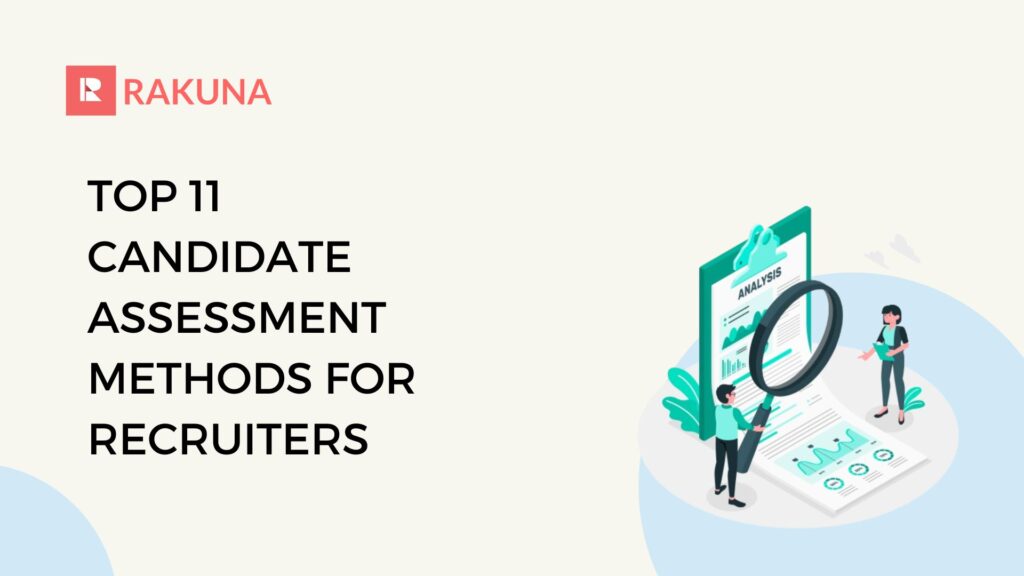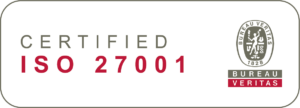Bad hires are costly. Beyond the financial burden, they impact team morale, project timelines, and overall company culture. While experienced recruiters are well-versed in the basic red flags when interviewing candidates – showing up late, badmouthing previous employers—some warning signs are far more subtle. This post explores advanced strategies for uncovering those hidden red flags and potential dealbreakers that even seasoned recruiters might miss, including subtle cues, inconsistencies in responses, and warning signs of a poor cultural fit.
Beyond the Basics

The cost of a bad hire can be expensive. A CareerBuilder survey found that bad hires can cost a company almost $17,000 each. Experienced recruiters know the common red flags, but sometimes, the most damaging issues are hidden beneath the surface. This post goes beyond the obvious, exploring the subtle cues, inconsistencies, and cultural fit mismatches that can signal trouble ahead. We’ll equip you with the tools to identify these hidden risks and make better hiring decisions.
Subtle Red Flags
These subtle cues, easily missed if you’re not looking for them, can range from how they handle pre-interview communication to their body language. Overlooking these seemingly small details can significantly impact a new hire’s success and your team’s overall dynamic. This section will help you identify and navigate these nuanced red flags so you can make confident hiring decisions and build a thriving team.
Micro-mirror Mismatch
Pay attention to how the candidate mirrors or fails to mirror your body language. Subtle mirroring is a natural part of building rapport during a conversation. If a candidate consistently fails to match your tone or gestures, it may indicate a lack of engagement, adaptability, or comfort. For example, if you lean forward in an inviting manner and they remain rigid or pull back, it could signal disinterest, discomfort, or even a tendency to struggle with collaboration in team settings
Vague or Evasive Answers
Generic responses or deflecting questions can be a red flag, signaling a lack of genuine experience or preparation. For example, if a candidate mentions “leadership experience,” a simple follow-up isn’t enough. Don’t just ask for an example; probe deeper. Ask about a specific instance where they demonstrated leadership, the challenges they faced, and the quantifiable results they achieved. If they struggle to provide concrete examples or metrics, it might indicate their “leadership” was more passive than impactful.
Overly Rehearsed Responses
Canned answers often lack authenticity and can make a candidate seem robotic. While some preparation is expected, a conversation that feels overly scripted can be a warning sign. To gauge authenticity, throw in an improvisational question – something not typically asked in interviews – or ask about a unique detail from their resume. How do they respond to unexpected pressure? Do they adapt and think on their feet, or do they stumble and revert to pre-prepared statements?
Lack of Curiosity/Engagement
A passive candidate who asks few or no questions demonstrates disinterest or a lack of preparation. Engaged candidates typically come prepared with insightful questions about the role, the team, the company culture, and future opportunities. If they fail to ask any questions, it may signal disinterest, a lack of critical thinking, or insufficient competence – or perhaps all three. Look for candidates who engage actively and show genuine curiosity – it demonstrates they’ve taken the time to research and are truly invested in the opportunity.
Inappropriate Language or Humor
Unprofessional language or jokes during an interview can reflect poor judgment and a lack of awareness, potentially clashing with your company’s culture. While a friendly demeanor is welcomed, there’s a line between convivial and inappropriate. Watch for off-color jokes, excessive slang, or remarks that seem out of place in a professional context. For instance, a joke about a sensitive social issue or using overly casual language can raise concerns about their professionalism.
Name-dropping and Excessive Jargon
While some industry jargon is expected, especially for technical roles, excessive use or name-dropping can be a way to mask a lack of real understanding. Look for how skills are used in practice, not just fancy words. Ask candidates to explain complex concepts in simple terms or describe how they’ve utilized specific technologies in previous projects. This helps assess their true depth of knowledge.
Shifting Blame
How a candidate discusses past failures or challenges can be incredibly revealing. Listen carefully for tendencies to shift blame onto colleagues, managers, or external factors. Accountability is a crucial trait. Look for candidates who own their mistakes, acknowledge their shortcomings, and articulate what they learned from the experience.
Inappropriate Attire
Wearing unsuitable clothing for an interview can indicate a lack of respect and awareness of the company’s culture, potentially casting doubt on their professionalism in other aspects. While the definition of “appropriate” can vary depending on the industry and company, candidates should always aim to present a polished and professional image.
Pay attention to whether their attire is suitable for your company and industry, as this can help you spot this warning sign. A software engineer interviewing at a casual startup might get away with jeans and a nice shirt, but the same attire would be inappropriate for a corporate law firm.
Unexplained Tardiness
Arriving late to an interview without a valid explanation reflects poor time management and disregard for others’ time. Consider whether they offer a reasonable excuse and notify you in advance. If they do, it might not necessarily be a red flag. However, frequent tardiness, even with explanations, could warrant closer scrutiny, suggesting a pattern of disorganization.
Interrupting During Interviews
Frequent interruptions from a candidate suggest poor listening skills and a lack of respect, both of which are essential for teamwork and client-facing positions. Observe whether the candidate frequently cuts you off or responds before you have completed your question. This behavior can disrupt the flow of conversation and hinder effective communication.
Breaching Confidentiality
This is a serious warning sign. Candidates who readily disclose confidential information from former employers demonstrate a lack of discretion and raise legitimate concerns about their ability to handle sensitive company data responsibly. Observe carefully whether the applicant divulges confidential details, such as client names, proprietary processes, or internal financial information, during the interview process.
Inconsistency Is Key: Spotting Contradictions When Interviewing Candidates

Inconsistencies – those little mismatches that can sometimes pop up during the hiring process. While everyone can have a slip-up now and then, noticing a pattern of contradictions between a candidate’s resume, their interview answers, or their online presence warrants a closer look. This section explores how to spot these inconsistencies and what they might signal about a candidate’s qualifications or character
Resume vs. Interview
Discrepancies between a resume and interview responses can be a major red flag. For example, a resume may list proficiency in a software program, but the candidate struggles to discuss practical applications or demonstrate actual knowledge when prompted. Another example would be a discrepancy in dates of employment. Address these discrepancies directly and ask clarifying questions. Don’t shy away from asking for specific examples or digging deeper into areas where the resume and interview answers don’t align.
Storytelling Inconsistencies
Pay close attention to how a candidate narrates their experiences. Do the details remain consistent throughout the interview? Do they recall specific projects, challenges, and outcomes with clarity? Inconsistencies within their own narrative—for example, changing project scopes, team sizes, or even the role they played—can indicate embellishment or fabrication. When interviewing candidates, rephrasing a question later and comparing answers can be a useful tactic.
Reference Check Discrepancies
Thorough reference checks are crucial for uncovering potential inconsistencies. Do references corroborate the candidate’s claims about their skills, experience, and accomplishments? Look for inconsistencies between reference feedback and interview responses. Even slight variations—for example, a reference downplaying a candidate’s leadership role while the candidate emphasizes it—can be significant and warrant further exploration. Prepare specific questions for references based on the candidate’s interview.
Timeline Gaps
Unexplained gaps in a candidate’s work history should be explored. While not always a red flag – people take breaks for legitimate reasons like family care or further education – they warrant further investigation. Ask open-ended questions about these periods and listen carefully to the explanations provided. Ensure the reasons align with what was discussed earlier in the interview and, if possible, corroborate the information with references.
Changing Career Direction Without Clear Reasoning
Frequent career changes without a clear connecting thread or logical progression can be a sign of instability or lack of focus. While some career exploration is natural, especially early on, a pattern of jumping from one unrelated field to another without a compelling rationale can raise concerns. Ask candidates to explain their career trajectory and how each move contributed to their professional development. Your goal is to look for a coherent narrative that demonstrates purpose and direction.
Signs of Poor Cultural Fit

A candidate might look great on paper and even ace the interview, but still something feels…off. This section explores those less tangible signs of a potential cultural mismatch, from differing communication styles to misaligned values, and how to assess them effectively.
Resistance to Feedback
Candidates who react negatively or dismissively to constructive feedback during role-play exercises or interview scenarios may struggle in collaborative environments. If you provide feedback on their approach to a hypothetical problem and they become defensive or dismissive, it could indicate an unwillingness to learn and adapt, which is essential for growth and teamwork.
Misaligned Goals
If a candidate’s career aspirations clearly diverge from the growth opportunities your company offers, they may not be a long-term fit. For instance, if a candidate expresses a strong desire for management responsibilities but your company has limited managerial tracks, their ambition might lead them to seek opportunities elsewhere relatively quickly. Explore their long-term career goals and assess whether your company can realistically provide a path toward achieving them.
Fixed Mindset
Pay attention to language indicating a lack of adaptability, such as “I’ve always done it this way” or resistance to hypothetical changes in workflows. A growth mindset, characterized by a willingness to learn and embrace new challenges, is crucial in today’s rapidly evolving work environments. Ask questions about how they’ve adapted to past changes or how they would approach learning new technology to gauge their openness to new ways of working.
Lying During Interview
Interview fabrication is a significant red flag. Discovering falsehoods or inflated skill claims during an interview – such as falsely claiming proficiency in a specific software or exaggerating the scope of a previous project can indicate broader integrity concerns. This lack of honesty often foreshadows future problems with trust and job performance. Employing behavioral interview questions (“Tell me about a time when…”) and thorough reference checks are key strategies for uncovering these potential issues.
Avoid Weakness-Related Questions
An inability to address shortcomings is another potential warning sign. Applicants who evade questions about their weaknesses or previous errors may demonstrate a lack of self-awareness or candor. While no one is perfect, being able to acknowledge areas for improvement is essential for both personal development and effective teamwork. Look for candidates who can discuss their weaknesses constructively, highlighting steps they’re taking to address them.
Excessive Focus on Salary
While compensation is undoubtedly a crucial factor in any job decision, an excessive focus on salary and perks like remote work or office amenities over the role itself can be a red flag. Candidates overly preoccupied with remuneration, constantly bringing the conversation back to money even when discussing job responsibilities or company culture, may lack intrinsic motivation and demonstrate lower engagement once employed. Look for candidates who express genuine interest in the work itself and the value they can bring to the team.
However, it’s essential to acknowledge the practical importance of salary and benefits in career decisions. Addressing compensation expectations early in the process, ideally during the initial screening call, can save both parties valuable time and prevent discrepancies later on. This proactive approach ensures that both the candidate and the company are on the same page regarding salary expectations and helps avoid potential disappointments down the line.
Pre- and Post-Interview Interactions

First impressions matter, and so do last impressions. A candidate’s behavior before and after the formal interview can be surprisingly revealing. From how they handle scheduling and communication to their follow-up, these interactions offer valuable insights into their professionalism, enthusiasm, and overall fit.
Overly Aggressive Follow-Ups
While enthusiasm is appreciated, pushy or insistent behavior after the interview can be a warning sign. This might include excessive emailing, calling instead of emailing when email was requested, demanding immediate responses, or expressing frustration at perceived delays. For example, a candidate who calls the recruiter daily after the interview, despite being told to expect a response within a week, demonstrates a lack of respect for boundaries and potentially troublesome future behavior.
Disrespectful Behavior to Support Staff
How a candidate treats receptionists, assistants, or other support staff is a powerful indicator of their character. Rudeness, impatience, or dismissive behavior towards anyone they perceive as “below” them is a major red flag. Imagine a candidate arriving late and then berating the receptionist for the delay. This behavior suggests a lack of professionalism and potentially a difficult personality.
Excessive Flattery
Politeness and expressing genuine interest are positive traits. However, excessive flattery or over-the-top compliments towards the interviewer can feel insincere and manipulative. For instance, a candidate who constantly praises the interviewer’s appearance, intelligence, or accomplishments, rather than focusing on their qualifications for the role, could be attempting to influence the outcome through insincere means.
Social Media Presence
While respecting privacy is crucial, a quick review of publicly available social media profiles can sometimes reveal inconsistencies or red flags. This might include discrepancies between the candidate’s presented professional image and their online persona or evidence of inappropriate behavior or controversial viewpoints that could negatively impact the company. Remember to be mindful of ethical considerations, avoid making assumptions, and prioritize information directly relevant to the role. For example, if a candidate claims to be a team player but their social media is filled with posts denigrating colleagues or former employers, this inconsistency warrants further investigation.
Lack of Preparation for Initial Contact
Candidates who arrive unprepared for initial phone screenings or preliminary interviews, lacking basic knowledge about the company or the role, demonstrate a lack of genuine interest and inadequate preparation. If a candidate can’t articulate why they’re interested in the position or the company or seems unaware of the company’s basic products or services, it suggests a lack of effort and potentially a dismissive attitude towards the opportunity. This lack of preparation can cost both the candidate and the company valuable time and resources.
More Candidate Assessment Methods for Your Recruiting Team

At Rakuna, we prioritize the success and efficiency of recruiters as the cornerstone of our mission. To help your recruiting team effectively identify and address candidate red flags, we invite you to explore Rakuna’s free guide on the most widely used candidate assessment methods.
Download the guide today to equip your team with actionable strategies and tools for smarter, more effective candidate evaluations.
Addressing Interview Red Flags Thoughtfully
Spotting red flags during interviews is essential, but handling them with care is just as critical. Not every concern raised during an interview warrants disqualification—some issues may be minor and easily resolved, while others require deeper scrutiny before making a final judgment.
Here are actionable ways to address red flags when it’s appropriate to move past them:
Assess the Impact of the Red Flag
Red flags vary significantly in their relevance. For example, slight nervousness or occasional eye contact avoidance might simply reflect interview anxiety, not a lack of confidence or sincerity. Distinguish between minor quirks and serious concerns that clash with your organization’s core values. Is the issue truly detrimental to their potential success in the role, or is it something manageable or even irrelevant?
Investigate Further Before Drawing Conclusions
Don’t jump to conclusions. Use red flags as opportunities to delve deeper. If a candidate seems unprepared, gently probe with questions like, “Can you tell me more about your understanding of this particular responsibility?” or “How did you approach similar challenges in your previous role?” Further questioning can reveal if the issue is a one-off or a recurring pattern.
Gather Diverse Perspectives from Your Hiring Team
Red flag interpretation is subjective. Your colleagues might have different interpretations of the same behavior. Discuss the concern with your team to gain a broader perspective. A hiring manager might view a candidate’s direct communication style as assertive, while a team member might perceive it as aggressive. This collaborative approach fosters a more balanced and objective evaluation.
Explore Additional Assessments or Follow-Ups
If doubts persist, consider further evaluation methods. Beyond a second interview, consider skills assessments (e.g., coding tests, writing samples) or personality tests to gain further insights. A practical test, like a mock sales pitch or a data analysis exercise, can provide valuable real-world insights. These tools can either validate your concerns or showcase the candidate’s strengths, offering a clearer picture of their potential. Even inviting the candidate for a brief job shadowing opportunity could be informative.
Match the Red Flag to Your Company’s Values and Role Expectations
Context matters. A candidate’s independent working style might be a concern for a highly collaborative role but perfectly suited for a position requiring individual initiative. Evaluate the flagged behavior against your company culture and the specific demands of the role.
Provide the Candidate an Opportunity to Address the Issue
Transparency can be beneficial. Tactfully address your concern and invite the candidate’s perspective. For instance, you might say, “I noticed you seemed hesitant when discussing your experience with project management. Could you elaborate on that?” Observe their response. Do they become defensive, or do they acknowledge the concern and discuss how they are working on it? This provides valuable insight into their self-awareness and willingness to learn.
Look for Offsetting Strengths
Weigh the red flag against the candidate’s strengths. Perhaps their exceptional technical skills compensate for a less polished presentation style, or their impressive portfolio outweighs a gap in their resume. Consider their growth potential – some red flags can be addressed with training and mentorship.
Document and Monitor Potential Red Flags Post-Hire
If you proceed with hiring despite a red flag, document it and create a plan to address it during onboarding and initial performance reviews. This might involve pairing them with a mentor, providing specific training, or setting clear performance goals related to the area of concern. Regular check-ins and open communication can help ensure the issue is addressed effectively.
Practical Strategies: Detecting Red Flags When Interviewing Candidates

When concerns arise during the interview process, structured approaches can help confirm or dispel those doubts. These strategies allow you to delve deeper, gain diverse perspectives, and make more informed hiring decisions.
Stress Testing
Simulating real-world challenges reveals how candidates handle pressure. Present job-relevant scenarios, like dealing with a demanding client or resolving a technical emergency. Ask them to outline their approach, focusing on their decision-making process and problem-solving skills. Time-sensitive tasks or unexpected role-playing exercises can further assess their ability to prioritize, manage stress, and adapt to unforeseen circumstances. For example, ask a customer service candidate to role-play handling a complaint with a limited time to resolve the issue.
Behavioral Validation
Don’t just accept claims at face value. Ask for multiple, specific examples of behaviors tied to key skills. If a candidate claims to be a strong leader, ask them to describe different situations where they demonstrated leadership, outlining the actions they took and the results they achieved. Use the STAR method (Situation, Task, Action, Result) to guide their responses and gain clear, actionable insights. Don’t hesitate to drill down on specifics and clarify any ambiguous or evasive answers.
Multiple Touchpoints
Gathering insights from various sources provides a more holistic view. Cross-functional interviews expose candidates to different team members and communication styles. Observing them in casual settings like a coffee chat can reveal their more natural demeanor. Panel interviews allow you to observe how they handle multiple questions and personalities simultaneously. Ensure consistent note-taking among interviewers to identify recurring red flags or inconsistencies across interactions.
Hypothetical Scenarios and Case Studies
These methods assess problem-solving skills and critical thinking. Present industry-specific case studies or ethical dilemmas relevant to the role. For a marketing role, you might present a case study involving a declining product line. Observe how they analyze the situation, develop solutions, and justify their decisions. Open-ended questions encourage creative problem-solving and offer a glimpse into their thought process.
Context-Specific Follow-Ups
Follow-up discussions can uncover valuable details. Revisit resume claims and ask for role-specific feedback. For instance, “Your resume mentions experience with budget management. Can you tell me about a time you had to make difficult budget decisions?” Discussing long-term goals allows you to assess whether their aspirations align with the company’s trajectory and the potential growth opportunities within the role.
Third-Party Verification
External perspectives add another layer of validation. Thoroughly check references, contacting past employers or colleagues to verify key claims and identify any potential mismatches or red flags that weren’t apparent during the interview process. If appropriate and with due diligence for privacy, review their online presence – LinkedIn profile, portfolio websites, or public social media – for anything that contradicts their presented image or raises concerns relevant to the role.
Specialized Cultural Fit Assessment Methods

Beyond skills and experience, cultural fit is crucial for long-term success. Here is how you can modify the above-mentioned tests for the task:
Values Misalignment
Shared values are the bedrock of a strong culture. Behavioral interview questions, such as “Describe a time you faced an ethical dilemma at work,” can reveal how a candidate’s actions reflect their values. Scenario testing, with hypotheticals like “How would you handle a situation where meeting a deadline might compromise quality?”, helps gauge alignment with your company’s principles.
Reverse questions, where candidates inquire about your company’s values, can indicate genuine interest and reveal potential areas of dissonance. Pay attention to the types of questions they ask and the depth of their interest.
Assessing Teamwork Styles
Cultural fit hinges on how well individuals collaborate. Team compatibility simulations, like a mock project or group discussion, offer valuable insights into how candidates interact with potential colleagues. Observe their communication style, contribution to the group, and how they handle differing opinions. Conflict resolution scenarios, such as “Describe a time you had a disagreement with a teammate. How did you resolve it?”, can reveal their approach to conflict and their ability to navigate interpersonal challenges constructively. Ask about preferred collaboration modes (e.g., independent vs. collaborative) to understand how their preferred working style fits with your team’s norms.
Long-Term Vision Mismatch
Aligning individual aspirations with your company’s trajectory is essential for sustained engagement and growth. Career path mapping, by asking candidates where they envision themselves in several years, helps determine whether their goals align with available opportunities within your organization. For instance, a candidate aiming for rapid management progression might not be a good fit for a company with a flatter structure.
Growth-oriented discussions, focusing on their adaptability and willingness to learn new skills, can reveal their openness to evolving with the company. Ask about times they’ve adjusted their career plans to accommodate organizational changes. Evaluate the realism of their ambitions relative to your company’s growth rate and structure. Overly ambitious timelines, while demonstrating drive, might also signal potential impatience or dissatisfaction if those expectations aren’t met.
To Conclude…
These advanced interviewing techniques empower you to go beyond surface-level assessments and identify potential red flags and dealbreakers that other recruiters might miss. Implement these strategies, refine your approach, and start bringing in qualified hires with minimal hassles!


